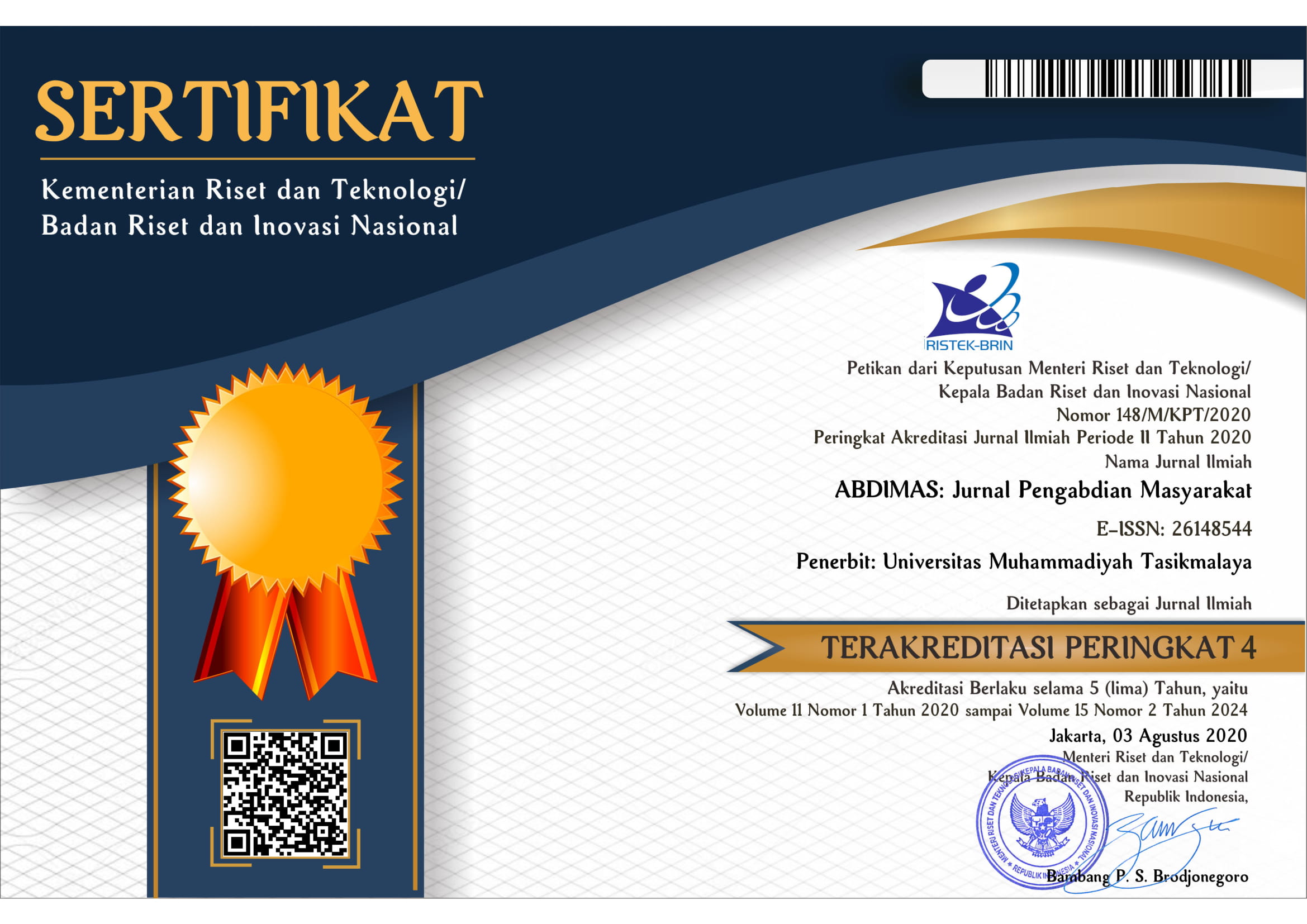Use of Direct Method in Arabic Vocabulary Learning for Arabic Language Teachers at Muhammadiyah Schools in DKI Jakarta
Bahasa Indonesia
DOI:
https://doi.org/10.35568/abdimas.v5i1.2058Keywords:
direct method, learning, vocabulary, arabic language.Abstract
Language has four components including sound, vocabulary, structure and meaning. In learning foreign languages, especially Arabic, these four components must be taught to students. In order for learning to get better results, it must be taught using the right method. Each language component already has a learning method. As for learning Arabic vocabulary, one of the methods is the direct method. The purpose of this community service activity is so that Arabic language teachers in Muhammadiyah schools in DKI Jakarta can increase their pedagogical competence in learning Arabic vocabulary so that the resulting learning can be better. The target of the service is Arabic language teachers in Muhammadiyah schools throughout DKI Jakarta. The activity will be carried out online on Thursday, December 23, 2021, at 08.30 to 11.45 WIB. The stages of the activity include answering pretest questions, training insights related to the direct method, teacher panel discussions from the material presented, answering posttest questions. The results of the teacher's activities can understand Arabic vocabulary learning by using the direct method. The continuation of the program implementation is by monitoring the teachers to apply it in learning Arabic vocabulary in the classroom. Implementing the activities of lecturers and students and assisted by the DKI Jakarta PWM Educational Council.
Downloads
References
Abdurochman. (2017). STRATEGI PEMBELAJARAN KOSAKATA BAHASA ARAB BAGI NON ARAB. An-Nabighoh, 19(1), 74.
Alwasilah, C. (2011). Metodologi Pembelajaran Bahasa Arab. Remaja Rosdakarya.
Amril, L. N. S. dan L. O. (2021). Pengembangan Minat dalam Belajar Bahasa Arab dengan Menggunakan Metode Talaqqi di Desa Ragajaya. Educivilia: Jurnal Pengabdian Pada Masyarakat Is Licensed under a Creative Commons Attribution-Share Alike 4.0Universitas Djuanda International License, 2(2).
Astuti, W. (2016). BERBAGAI STRATEGI PEMBELAJARAN KOSA KATA BAHASA ARAB. Jurnal Komunikasi Dan Pendidikan Islam, 5(2), 184.
Baroroh, F. R. S. dan R. U. (2020). Strategi dan Metode Pembelajaran Kosakata Bahasa Arab. IJAZ ARABI, 3(2), 243–251.
Effendy, A. F. (2005). Metodologi Pengajaran Bahasa Arab. Misykat.
Hermawan, A. (2014). Pembelajaran Bahasa Arab. Remaja Rosdakarya.
Khuli, M. A. Al. (2010). Strategi Pembelajaran Bahasa Arab (Cetakan 1). Basan Publishing.
Kurniawati, E. S. & L. (2020). Pelatihan Keterampilan Guru dalam Membuat Perencanaan Pembelajaran Sains Anak Usia Dini. JURNAL PENGABDIAN PADA MASYARAKAT, 5(2), 522.
Madjid, M. N. (2020). Peningkatan Kosa Kata Arab Murid TPA Prima Melalui Metode Read Aloud Dan Bernyanyi. PROSIDING SEMNAS PPM 2020: Inovasi Teknologi Dan Pengembangan Teknologi Informasi Dalam Pemberdayaan Masyarakat Pasca Covid-19, 901.














